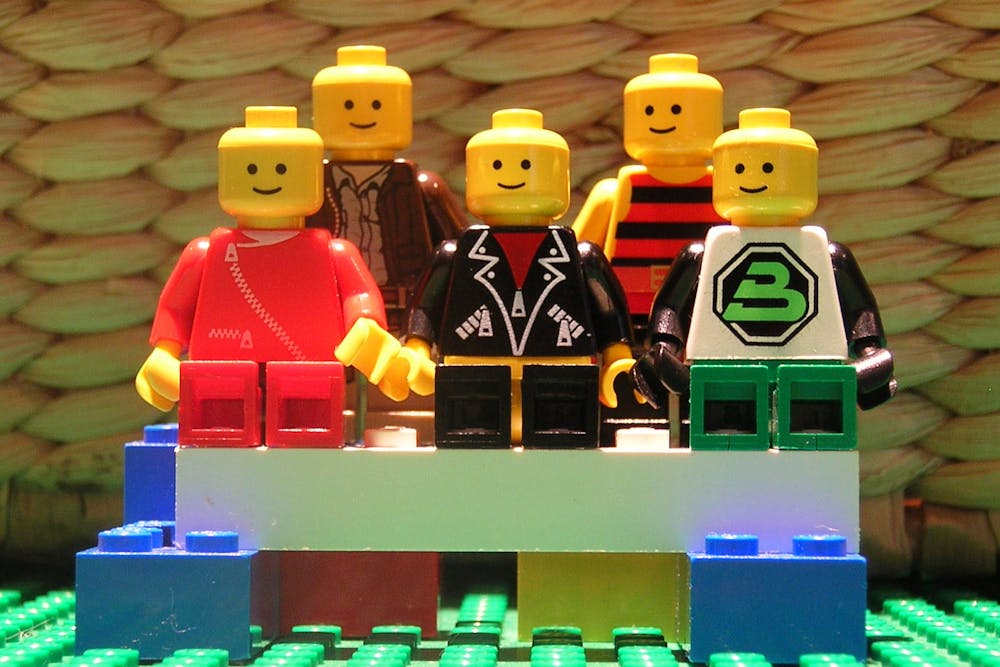By Janjabill Tahsin
Staff Writer
The Good News Lion is the Nation & World section’s biweekly news segment, highlighting positive news in the country and around the world. The theme of this article is the positive impact on the environment.
Teen creates a cancer-fighting soap
Heman Bekele, a 15-year-old scientist, was named TIME’s 2024 Kid of the Year for inventing cancer-fighting soap.
The 3M company and Discovery Education selected Bekele, a sophomore at Woodson High School in Fairfax County, Virginia, as the winner of last October’s Young Scientist Challenge. He received $25,000 in prize money for inventing a soap that could potentially treat and even prevent multiple forms of skin cancer, including melanoma.
While it may take years before such a product is available for sale, this summer Bekele worked in a lab at the Johns Hopkins Bloomberg School of Public Health in Baltimore, determined to bring his dream to fruition.
According to an interview with NPR, Bekele’s inspiration came from his childhood in Ethiopia, where he saw laborers working without protection for their skin in the blistering sun. It was not until he was four years old that he moved to the United States and realized, while growing up, the global burden of skin cancer.
The average price of skin cancer treatment globally is almost $40,000, according to the JAMA Network. When Bekele heard this, it empowered him to develop a more affordable and accessible solution — soap with lipid-based nanoparticles that delivers cancer-fighting drugs. Instead of washing away the soap, it would linger on the skin, much like moisturizer and fragrance do after the suds are rinsed off.
“It’s absolutely incredible to think that one day my bar of soap will be able to make a direct impact on somebody else’s life,” Bekele told TIME. “That’s the reason I started this all in the first place.”
While Bekele is at the Bloomberg School less because Woodson High School’s academic year began, he continues to plug away at his research.
Oyster shells repurposed as ‘Seawool’ fabric
The ‘Seawool’ fabric, a flexible yarn similar to sheep’s wool, is helping reduce fashion waste.
Eddie Wang, a 42-year-old man, grew up on Taiwan’s west coast, where mollusk farming is popular. He remembered that residents in Yunlin County used discarded shells that littered the streets during oyster harvesting, crushing them to insulate their homes, which led him to experiment with making fabric out of oyster shell residue.
“They burned the shells and painted the residue on the walls. The houses then became warm in the winter and cool in the summer, so I was curious about why oyster shells have such a miraculous effect,” Wang said at his factory in Tainan, as stated by the Taipei Times.
According to the Taiwanese Department of Agriculture, restaurant and fishing businesses discard 160,000 metric tons of mollusk shells annually. While oysters themselves are not necessarily a waste material, they are a part of an already existing waste stream.
Furthermore, many fisheries have a policy to dump discarded shells on oyster reefs because of their high content of calcium carbonate, as reported by the National Institutes of Health. Calcium carbonate helps repair and grow living oyster reefs, greatly increasing the number of surfaces oyster larvae can attach to.
However, oysters pile up on the streets of aquafarming towns such as Yunlin, Changhua and Chiayi, generating a tremendous foul odor and providing breeding grounds for mosquitoes.
Wang’s Creative Tech Textile company grinds the oyster shells into nanobeads and combines them with yarn made from recycled plastic bottles. According to the Good News Network, “Being that oysters are calcium carbonate, a product used in many different industries, powdered oyster shells could be used to replace limestone quarrying, the major source of calcium carbonate, and a large source of emissions and pollution.”
Wang’s factory annually processes 100 tons of oyster shells into 900 tons of Seawool and earns $6 million gross, supplying most of it to sustainable clothing brands in Europe and the U.S.
U.S. national parks receive a gift of $100 million
The National Parks Foundation (NPF) has received $100 million from the Indianapolis-based foundation Lilly Endowment Inc. to protect ecosystems at immediate risk of degradation, rendering it the largest grant in history benefiting U.S. national parks.
Will Shafroth, president and CEO of the NPF, said that the money will address the needs of over 400 national parks sites and hopes to announce the first round of grants derived from the donation later this year, as reported by AP News.
The foundation has not yet decided how to utilize the money, but it is prioritizing restoring coral reefs in Biscayne Bay National Park from a historic bleaching event, as well as trout species in western national parks from warmer water temperatures, nonnative predatory smallmouth bass and the complete shutdown of Lake Mead Fish Hatchery.
In addition to protecting the parks’ most fragile ecosystems, Shafroth said funding will also go to creating opportunities for young people to visit national parks.
LEGOs plans to make half of its plastic with renewable materials by 2026
Toymaker LEGO plans to replace the fossil fuels used in making its signature bricks with recycled materials by 2026, turning half of its plastic renewable in an effort to be more environmentally friendly.
By 2032, the Danish company plans to switch entirely to renewable and recycled plastic, testing more than 600 alternative materials such as cooking oil, food industry waste fats or outright recycled plastic.
Although the toymaker struggled last year to make bricks entirely from recycled bottles instead of oil-based plastic, The Guardian reported that 22% of the bricks’ material is not made from fossil fuels.
LEGO hopes to gradually reduce the amount of oil-based plastic it uses by paying up to 70% more for certified renewable resin, amounting to over $350 million in an 8-year investment strategy in an effort to encourage manufacturers making these sustainable alternatives to increase production without passing on such high additional costs to the consumer.
The toymaker has also expanded its Replay program, allowing customers to return their old LEGOs for free and repurpose them into new sets.
Advancements in battery technologies may make for a more energy-efficient future
After several years of research, researchers at Chalmers University of Technology in Sweden have developed a “structural battery,” which is both a battery and part of a device’s structure, making devices like cars and airplanes significantly lighter and more energy-efficient, reducing their carbon footprint.
“For instance, an electric car equipped with these batteries could see its driving range increase by up to 70% on a single charge, all thanks to the reduced weight,” according to EV Magazine.
EurekAlert reports that the Chalmers team has improved both the energy density and stiffness of their structural battery. The battery, made of carbon fiber composite, is now as stiff as aluminum and has enough energy density for commercial use, potentially reshaping the future of energy-efficient vehicles and electronics.







